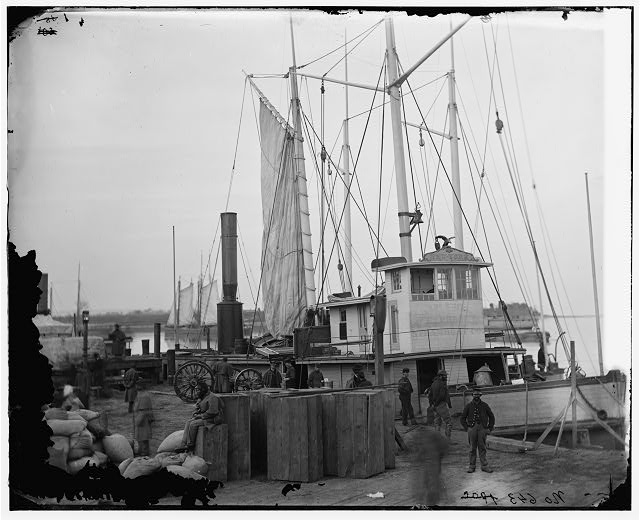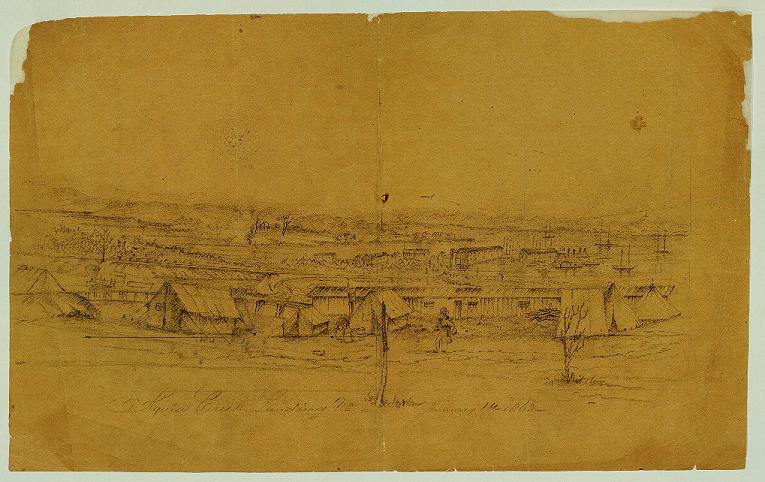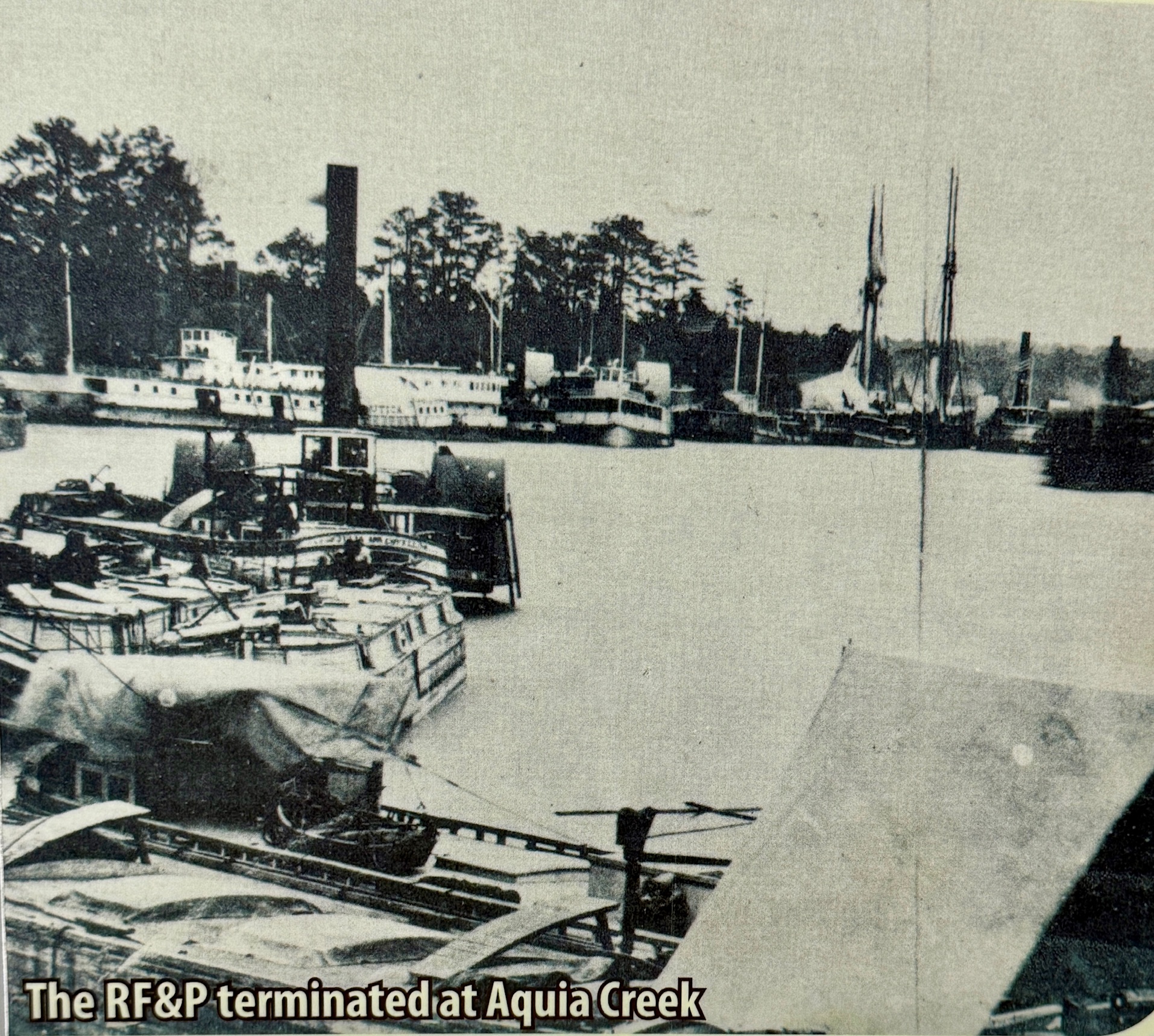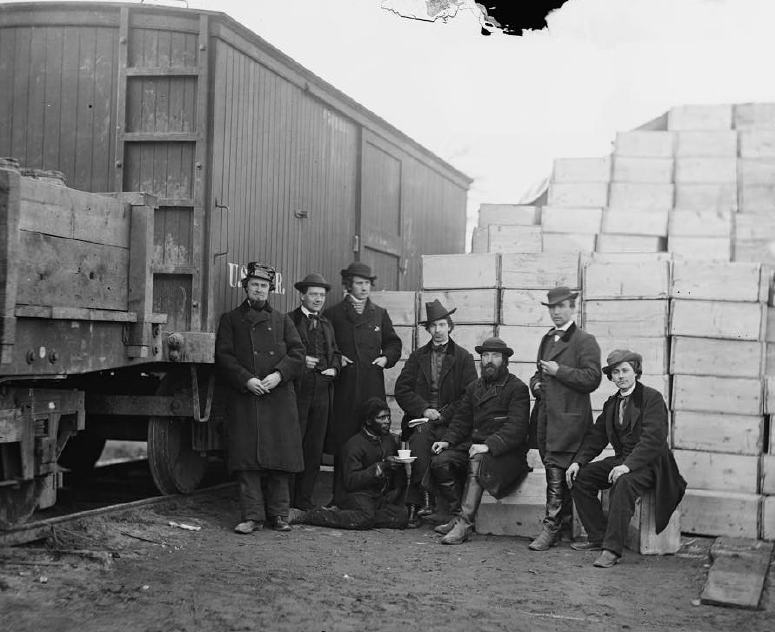Aquia Landing
In Colonial times the most common mode of land transportation in Stafford County was horse, wagon or stagecoach. If one wished to travel north it was a long journey which depended upon the weather, as the eastern Chopawamsic Creek area in northern Stafford became a swampy, muddy bog after rain and impeded traffic for weeks. The average trip from Richmond to Washington was thirty-eight hours in duration.
The year 1815 brought forth a dramatic change with the emergence of the steamboat. Daily steamboat runs were established from Washington D.C. to Aquia Creek Landing. Aquia Landing became a busy port, as many travelers would disembark and catch a stagecoach and travel to Richmond.
Twenty-seven years later, in 1842, another transportation change took place making Aquia Landing an important terminus. The RF&P Railroad laid track connecting Richmond to Aquia Landing. This cut the travel time from Washington to Richmond to just nine hours.
The start of the Civil War began on April 12, 1861, at Fort Sumter in South Carolina.
On May 31, 1861, Stafford saw the first naval engagement of the Civil War between the U.S. Navy and the shore batteries of the Confederacy at Aquia Landing. It was also the first time in battle that mines were placed in the water.
Exchanges of fire continued through June 1st. The final result was reportedly limited to the death of a chicken and horse, the destruction of the wharf, and damage to part of the railroad tract and earthworks.
Aquia Landing was used off and on by the Union forces at the beginning of the war. Later, it was an important transportation center for the Union. Ships bringing men and supplies were a common site. There were hourly railroad runs between Aquia Landing and Falmouth Railroad Station (where Eagles Lodge on Cool Springs Road stands today) Lincoln visited Stafford six times during the Civil War and usually landed there.
In 1862, after Union troops arrived in Falmouth, many enslaved people realized that they could be free if they escaped through Stafford. It is thought that over 10,000 enslaved persons passed through Aquia Landing, now known as “The Gateway to Freedom.”
After the battle of Fredericksburg, wounded were evacuated to travel north. Famous people like Dr. Mary Walker and Clara Barton helped in this effort. Also, the dead were transported to Washington D.C.
After the battle and a disastrous Mud March in January of 1863, troops were discouraged and there were as many as 200 desertions a day. Lincoln removed General Burnside and placed General Hooker in charge. Hooker revitalized the army by bringing in fresh vegetables, meat, uniforms, and shoes. Tons of food for the horses and mules also was unloaded there. Aquia Landing was a very busy place.

Aquia Landing 1862



Resource:
Conner, Jane. Lincoln in Stafford. Fredericksburg: Cardinal Press, 2007.

